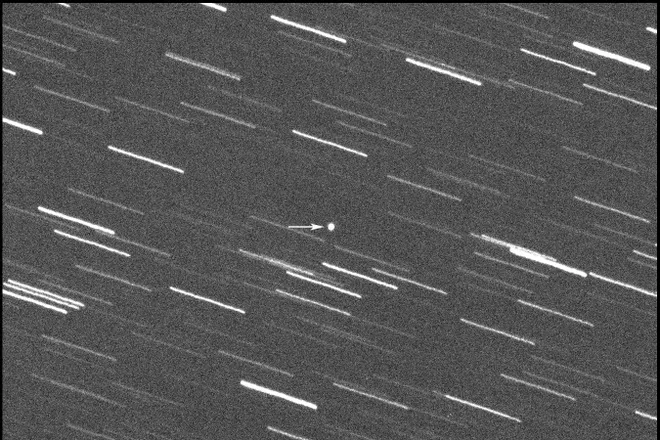NASA tracked a stadium-size asteroid that passed by Earth but was not a threat: See a video
An asteroid the size of a football stadium capable of leveling an entire city hurtled by Earth on Friday at 41,000 miles per hour.
Despite its destructive powers, astronomers say we never had anything to fear: The colossal space rock harmlessly whizzed by, as expected, within 1.7 million miles of Earth – or seven times the distance from our planet to the moon.
The trajectory of the asteroid, named 2008 OS7, may have given it a wide berth as it passed Earth, but it still flew close enough to our planet for astronomers to want to track its path.
Here's what to know about the "near-Earth object," and how you can still tune into a since-ended livestream to watch its close(ish) encounter with our planet.

Newest Webb imagesSee 'mind-blowing' images ofpiral galaxies snapped by NASA telescope
What do we know about asteroid 2008 OS7?
NASA's Jet Propulsion Laboratory estimates the space rock to be about 890 feet across, making it similar in size to most football stadiums and even New York City’s Empire State Building.
The asteroid approached Earth for its first trip by our planet since 2016 – and its last until 2032. But the next time 2008 OS7 comes back our way, it will be a much more distant encounter of 45 million miles away.
The flyby was one of four near-Earth asteroids NASA anticipated would harmlessly cruise by Earth on Friday. However, the other three asteroids are much smaller, with the largest being just 70 feet across.
Since NASA's Center for Near Earth Object Studies began detecting asteroids, the agency has discovered 32,412 through Aug. 31. It's estimated that another 14,050 asteroids at least 460 feet in length are waiting to be discovered.
How to watch the asteroid fly near Earth
The asteroid was much too small and far away to see without a telescope.
But those who want to catch a glimpse of the asteroid, even if it's virtual, still have their chance. The Virtual Telescope Project streamed the event live on YouTube.
The video, which remains available, allows viewers to distinguish 2008 OS7 as a tiny dot moving past stars that appear as even tinier dots in the background.
Here's where to watch it:
What are 'potentially hazardous' asteroids?
The asteroid 2008 OS7 is large enough for NASA to deem it as "potentially hazardous" space object.
The JPL lab, which the California Institute of Technology manages on behalf of NASA, tracks any asteroids or comets with orbits that will bring them within 4.6 million miles of Earth, or 19.5 times the distance to the moon. Its Asteroid Watch dashboard displays the date of the next five closest approaches, as well as each object's approximate diameter and its distance from Earth.
Any object larger than about 150 meters (about 492 feet) that can approach the Earth to within this distance becomes potentially hazardous, according to the lab.
Most asteroids orbit within the main asteroid belt between the orbits of Mars and Jupiter. But some follow paths that circulate into the inner solar system, including so-called near-Earth asteroids, according to NASA.

What is NASA doing to protect Earth from asteroids?
Within the last few years, NASA has taken steps to protect humanity from threats posed by not only asteroids, but also other inbound objects, such as comets.
The Planetary Defense Coordination Office was established in 2016 to catalogue near-Earth objects that could crash into the planet in order to help the U.S. government prepare for efforts to mitigate or deflect potential threats. About a year ago, NASA successfully crashed a spacecraft into an asteroid known as Dimorphos, adjusting its speed and path as the first test mission for the agency's Double Asteroid Redirection Test.
But typically, planetary defense experts prefer nudging threatening objects out of the way rather than obliterating them in order to avoid a blown-up space rock from raining down in multiple pieces onto Earth.
NASA is also working on an asteroid-hunting telescope known as the NEO Surveyor to find near-Earth objects capable of causing significant damage. Set to launch no earlier than June 2028, the telescope is designed to discover 90% of asteroids and comets that are 460 feet in size or larger and come within 30 million miles of Earth’s orbit.
Eric Lagatta covers breaking and trending news for USA TODAY. Reach him at elagatta@gannett.com

Disclaimer: The copyright of this article belongs to the original author. Reposting this article is solely for the purpose of information dissemination and does not constitute any investment advice. If there is any infringement, please contact us immediately. We will make corrections or deletions as necessary. Thank you.




